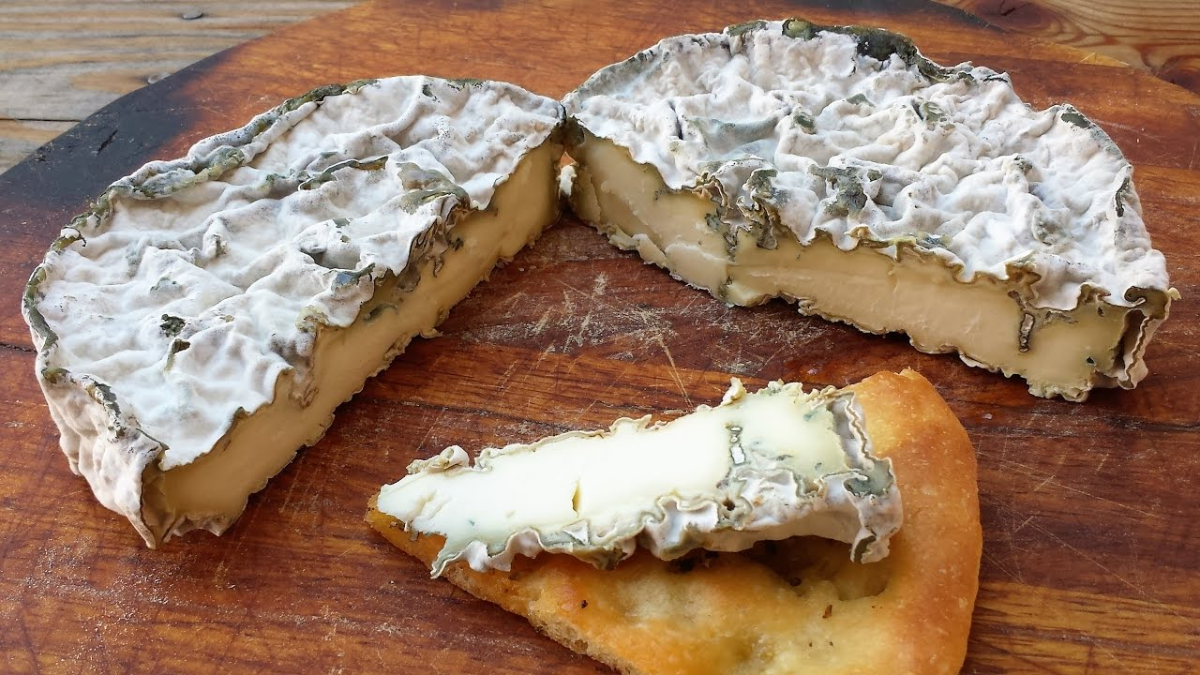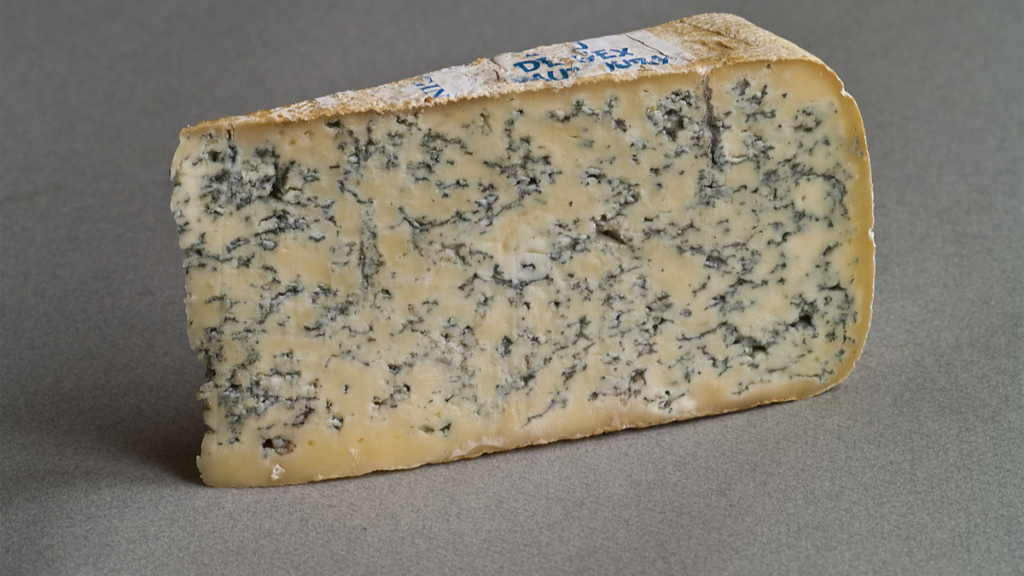This straightforward homemade blue cheese dressing is superior to any brand you can buy. It is creamy and great for salad dressing or as a dipping sauce. Get the straightforward homemade blue cheese dressing recipe right away. This blue cheese dressing is superior to store-bought versions and takes a few minutes to create. Most of the ingredients are likely already in your home. This creamy dressing is equally easy to make as our homemade Italian vinaigrette, creamy Caesar, and buttermilk ranch dressing (which also doubles as a marinade).
What is Blue Cheese?
It is believed that blue cheese accidentally developed during the Middle Ages when Cheese was stored in caves with controlled humidity and temperature. According to legend, a cheese maker in Roquefort, France, once hid a half-eaten loaf of bread in a cave where, when he came back, he discovered the cheese had become blue due to the mold on the bread. The varieties of it are numerous. After the original versions were made in France and Italy, further variations appeared throughout Europe and North America.
Depending on the kind, blue cheese’s flavor and texture can range from crumbly, weepy, salty, and sharp to softer, creamy, and subtly earthy. Some types are cream-enhanced and have a delicate center and bloomy rind. Regardless of the shape or flavor profile, it can be identified by the green, blue, gray, or black veins or mold spots found all over the body. Supermarkets and specialty shops sell a variety of them, with prices varying from inexpensive to expensive, depending on the source.
How to Make it?
Pasteurization of raw milk is followed by acidification, which turns the milk from liquid to solid by converting lactose to lactic acid when a starting culture is added. To help the milk coagulate, rennet is added, and the curds are sliced to release the whey. Wheels are created by draining the curds. The cheese is salted to avoid deterioration, and Penicillium Roquefort is sprinkled on top. It takes the Cheese 60 to 90 days to mature.
The cheese is “spiked” with stainless steel rods during the early maturing process to allow oxygen to circulate and promote the mold’s growth, forming the cheese’s distinctive blue veins. This also goes by the name “needling.” The texture is softer, and the cheese’s unique blue flavor is developed during this procedure.
Mold cultures and needling mostly influence blue cheese’s flavor and texture, but there are always additional elements at work. It has a distinctive flavor determined by the type of milk used (cow, sheep, or goat), the animals’ diet before they were milked, and the somewhat different cheese making methods employed by each cheese maker.
Ingredients
- 2 gallons of cow, goat, or sheep’s milk, whole
- Cream, one pint
- 1 tsp. calcium chloride and one tbsp. water (optional; helps store-bought milk curd set better)
- One package starter yogurt culture
- Direct-set mesospheric starter, one package
- 1/4 cup water and one teaspoon liquid rennet
- 1 ounce. Blue Cheese and 1/4 c. water combined
- Two tbs. of kosher salt
Equipment
- a 2.5-gallon stockpot
- metallic long spoon (the length of the depth of your pot)
- or a cake spatula, long (the length of the depth of your pot)
- thermometer
- colander
- tray with a lid or cookie sheet
- 2 kg aluminum or plastic cheese mold (should hold about 1 quart by volume)
- A cotton dishtowel or a thin cheesecloth measuring 2′ square
- Two bamboo sushi mats or plastic cheese mats
- 5-gallon bucket and lid made of food-grade polypropylene
- a wooden or metal wrack that fits into the five gals. bucket’s bottom
Instructions
- Mix the sour cream, mayonnaise, blue cheese, parsley, lemon juice, salt, and pepper in a small bowl until thoroughly combined and creamy.
- For additional flavor, press some of the blue cheese crumbles into the sauce using the back of a spoon. Because of its thickness, the dressing is ideal for dipping.
- Add a tablespoon of milk, buttermilk, or water to create a pourable salad dressing. After tasting, add more lemon juice, salt, and pepper as needed.
- For a week, store in the refrigerator with a tight lid.
How Long will Homemade Blue Cheese Dressing Last?
The good news is that this quick homemade dressing is kept in the refrigerator for about a week. We enjoy making a double batch so we can use it for dinners throughout the week, add it to salads, or use it as a veggie dipping sauce. Indeed, we currently have a jar of it in our refrigerator that is ready to be added to our favorite foods. Here are some ideas for this straightforward blue cheese dressing: Use your favorite homemade salad instead of store-bought salad. It is tasty with baby greens, kale, Brussels sprouts, cabbage, carrots, sweet bell peppers, cauliflower, and broccoli.
Use this blue cheese dressing instead of the regular dressing while making Cole slaw. It also goes well with fruit-filled salads (like grapes, apples, or pears). Use as a dipping sauce for raw vegetables, roasted vegetables (like these sweet potato fries), or anything with a buffalo taste by adding to a small bowl. These chicken wings, this buffalo chicken rice bowl, and these baked buffalo cauliflower wings are some of our favorites.
Types of Blue Cheese
One of the oldest blue cheeses, Roquefort, is likewise regarded as a delicacy. Roquefort is a cheese made from sheep’s milk and matured in limestone cliffs in the south of France. It is distinguished by the blue veins that run throughout its moist, crumbly body. It has deliciously subtle flavor characteristics that are complex and powerful, creamy and fragrant, and crisp and sweet.
Italian cheese called Gorgonzola is made from milk from cows that graze in the pastures of Piedmont and Lombardy. Young Gorgonzola has a buttery, creamy texture with a faint tinge of blue. Versions that have been aged are earthier, have a stronger flavor, and have a sharper bite.
Blue Stilton is a cow’s milk cheese made in the English Midlands. It has a strong cylindrical shape and a gorgeous blue marbled pattern. It has a rich, creamy, nutty, and salty flavor and a little moist and crumbly texture.
On the island of funned, the blue cheese called deniable is made from cow’s milk. Its flavor is salty and slightly sharp, akin to Roquefort but milder, and it has a creamy, smooth texture.
With its last appearance in the late 20th century on the blue cheese timeline, double-cream blue cheese is in a class by itself. It is created from cow’s milk that has been enhanced with cream and is distinguished by having a creamy interior and occasionally a bloomy rind. Saint-agar, Blue Costello, and bamboozle are a few varieties of this cheese.
Is Blue Cheese Healthy for you?
Nutrient-dense blue cheese offers several significant health advantages. For instance, blue cheese has a higher calcium content than other cheese forms. One ounce of blue cheese has 150 mg of calcium in it. According to studies, those who regularly eat blue cheese have a lower risk of developing cardiovascular problems than those who don’t. Additionally, blue cheese lowers cholesterol, reduces arterial inflammation, and prevents blood clots in veins or arteries.
An adverse effect of blue cheese is that it can raise blood pressure. Each ounce of blue cheese contains 391 milligrams of sodium. A healthy adult shouldn’t consume more than 2,300 mg of sodium daily since a high-sodium diet makes it harder to control blood pressure. Studies have indicated that blue cheese’s anti-inflammatory characteristics can enhance heart health and lower cholesterol. It lowers the risk of several heart problems, including stroke, by preventing artery inflammation and blood clotting in the veins and arteries.
Substitutes
It has wide varieties, one can frequently be replaced by another. Make sure to select cheeses with comparable textures and flavors, such as Roquefort and deniable, a young Gorgonzola and Blue Costello, bamboozle and Saint-agar, etc.
Uses
It is a great addition to a cheese board because it goes so well with fruit and nuts. To add flavor, whisk it into creamy sauces, dressings, and soups. You can also sprinkle it on salads. It also gives baked grains, gooey pasta dishes, and meat stuffing’s an umami flavor boost.
Storage
For up to three weeks, keep blue cheese that has been opened, covered in foil, parchment paper, or waxed paper. Additionally, blue cheese can be wrapped, placed in an airtight bag or container, frozen for up to three months, and then thawed in the fridge. It’s better to use thawed blue cheese in cooked recipes since frozen blue cheese will become more crumbly and lose some of its flavors.
What Kind of Cheese Turns into Blue Cheese?
Of all the blue cheeses, Roquefort, one of the original varieties, has the richest aroma and flavor. It is prepared from ewe’s milk. Gorgonzola: Named after the Italian town where it was first produced, this cheese is created from cow’s milk. Blue Stilton: An English company makes this cow’s milk cheese. However, it is now produced in various nations and culinary traditions. Numerous different types of blue cheese exist. The four classics are the following: Spanish cabrioles, Italian Gorgonzola, English stilton, and French Roquefort.
It is produced with Penicillium, a species of mold that gives it its distinctive flavor, aroma, and color. Penicillium does not create toxins and is safe to consume, in contrast to other species of mold. The main microorganism in blue Cheese is Penicillium roqueforti, a similar fungus (Figure 1B). This fungus can be injected into milk to make blue cheese, but it can also be found naturally growing in the limestone caves of southwest France, where the famous Cheese, Roquefort, is made.
Conclusion
It is a catch-all phrase for cheese produced using cultures of the mold penicillium and manufactured from pasteurized cow, sheep, or goat milk. Blue cheese typically has a salty, tangy flavor and a strong aroma. It often has a low-fat content but a high salt content. Calcium, phosphorus, and protein are all present in good amounts.
It is renowned for having an earthy, sour, and acidic flavor. Blue cheeses are well known for carrying a range of secondary bacteria and molds, such as Brevibacterium linens, Penicillium candidum, and Penicillium camembert, in addition to the acidic penicillin mold. Along with B. linens, cheeses like taleggio, Limburger, and Munster develop a reddish wash and emit a “stinky foot” stench.


